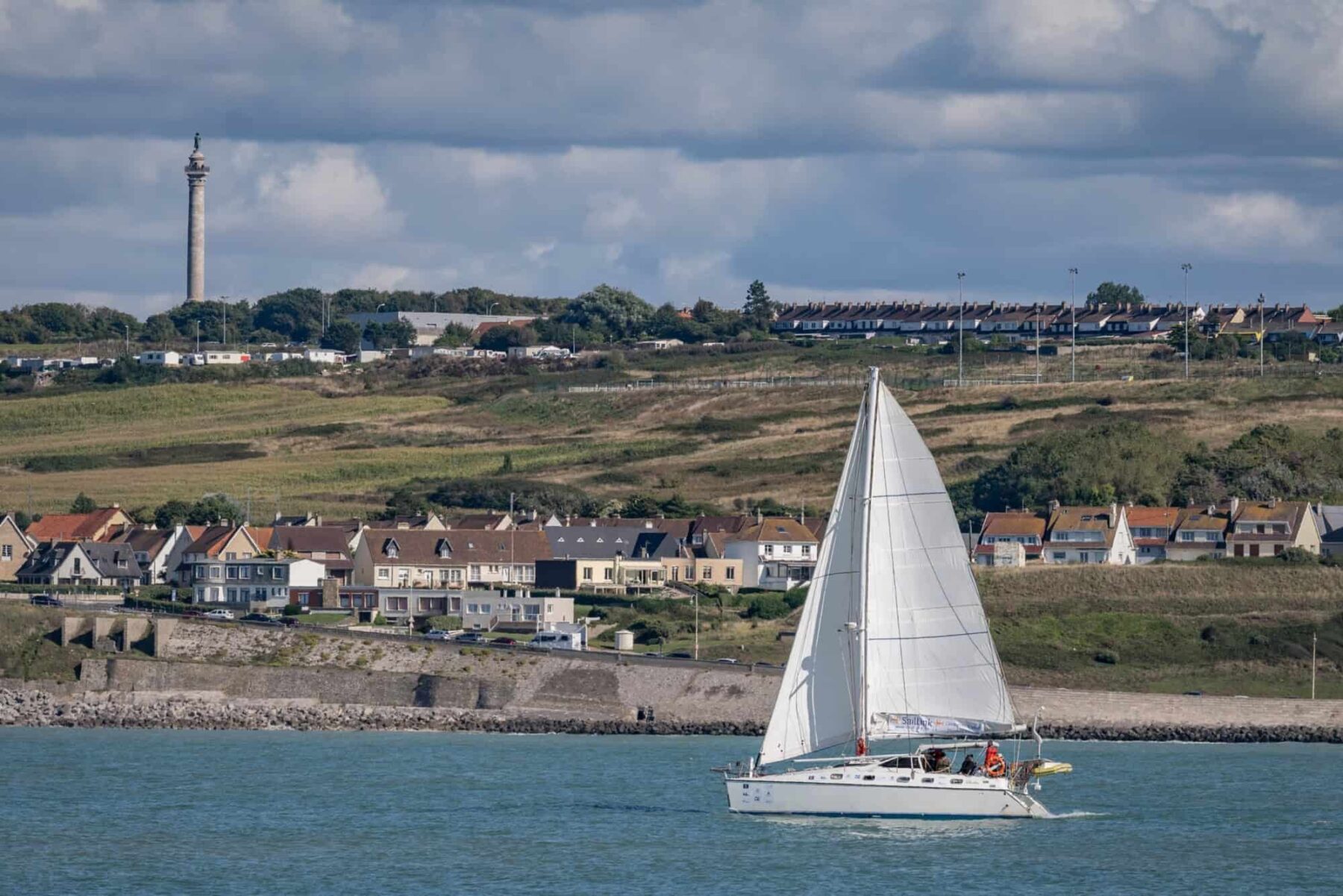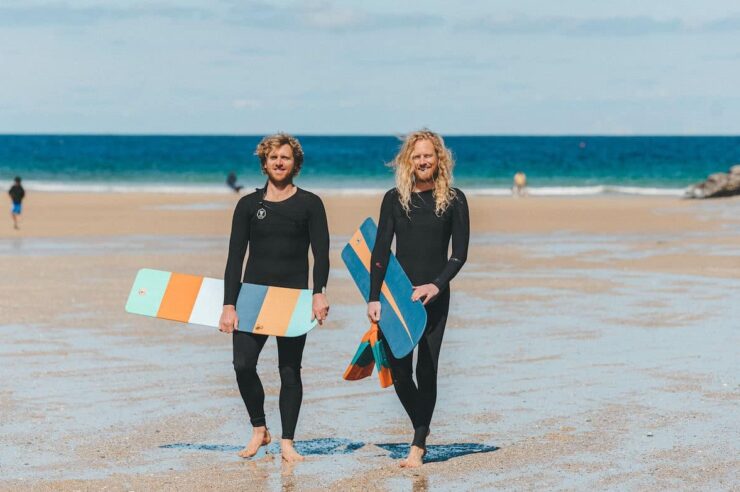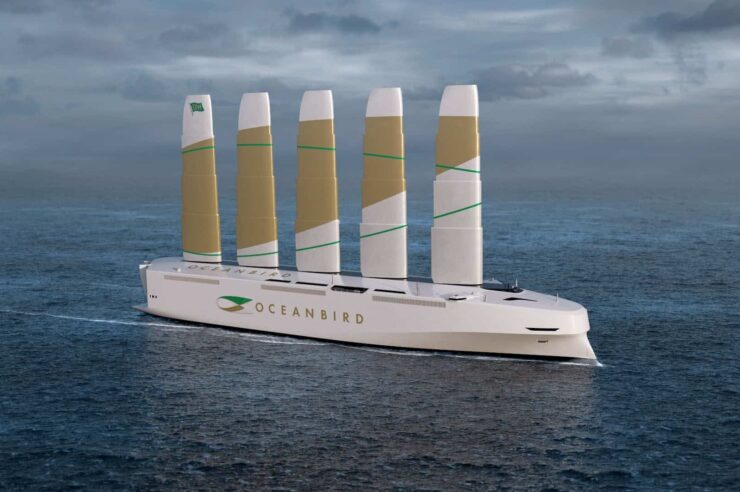A new ferry between England and France aims to significantly cut the CO2 emissions of crossing the Channel. Positive News tests it out
Wer-thump. The bow of the yacht slaps down against the turquoise waves, the spray of the English Channel raining down on the deck. We’re in the middle of the Strait of Dover, the busiest international seaway in the world.
From the shore, the water had seemed calm, but out here now – crossing what is effectively a motorway of massive cargo ships and a round-the-clock Dover to Calais ferry service – the sea feels much choppier.
“This is a slight to moderate sea state,” says captain Jim Duerden, meaning the waves are between 50cm and 250cm in height. In the sailing world, it’s relatively calm.
Still, the bow of Mago Merlino, the 12m-long sailing catamaran we’re currently riding, continues to dip back into the waves. It’s completely exhilarating.
But this crossing isn’t just for fun. We’re nosing our way to Boulogne-sur-Mer in France on a brand new ferry crossing service set up by SailLink.
Currently at pilot stage, Duerden and the company founder Andrew Simons have spent two years crossing back and forth from England to France, testing and timing the route and streamlining the procedures for passengers, with the aim of launching a green sailboat service in 2024.
I want to focus on the sailing experience, and for passengers to be able to go back home and say they’ve actually learned something
“I’m not trying to be a competitor with the ferries – I can’t take a lorry,” says Simons, who dreamed up the idea of creating an adventurous, green travel option between the two countries. “I want to focus on foot passengers and cyclists, the cultural connection between the hearts of the ports, the sailing experience, the real closeness to the ocean, and [for passengers] to be able to go back home and say [they’ve] actually learned something as well.”
This crossing certainly ticks all of those boxes. Passengers are encouraged to help out should they wish – there are ropes to be pulled, sails to be hoisted, tacking to be done. You can even have a go at helming. The feedback so far has been positive.
“We’ve had a bit of a mixed bag of passengers, some local who have come across for a few days, and some who are really trying to [travel] a lot further. We’ve even had commuters,” says Simons.
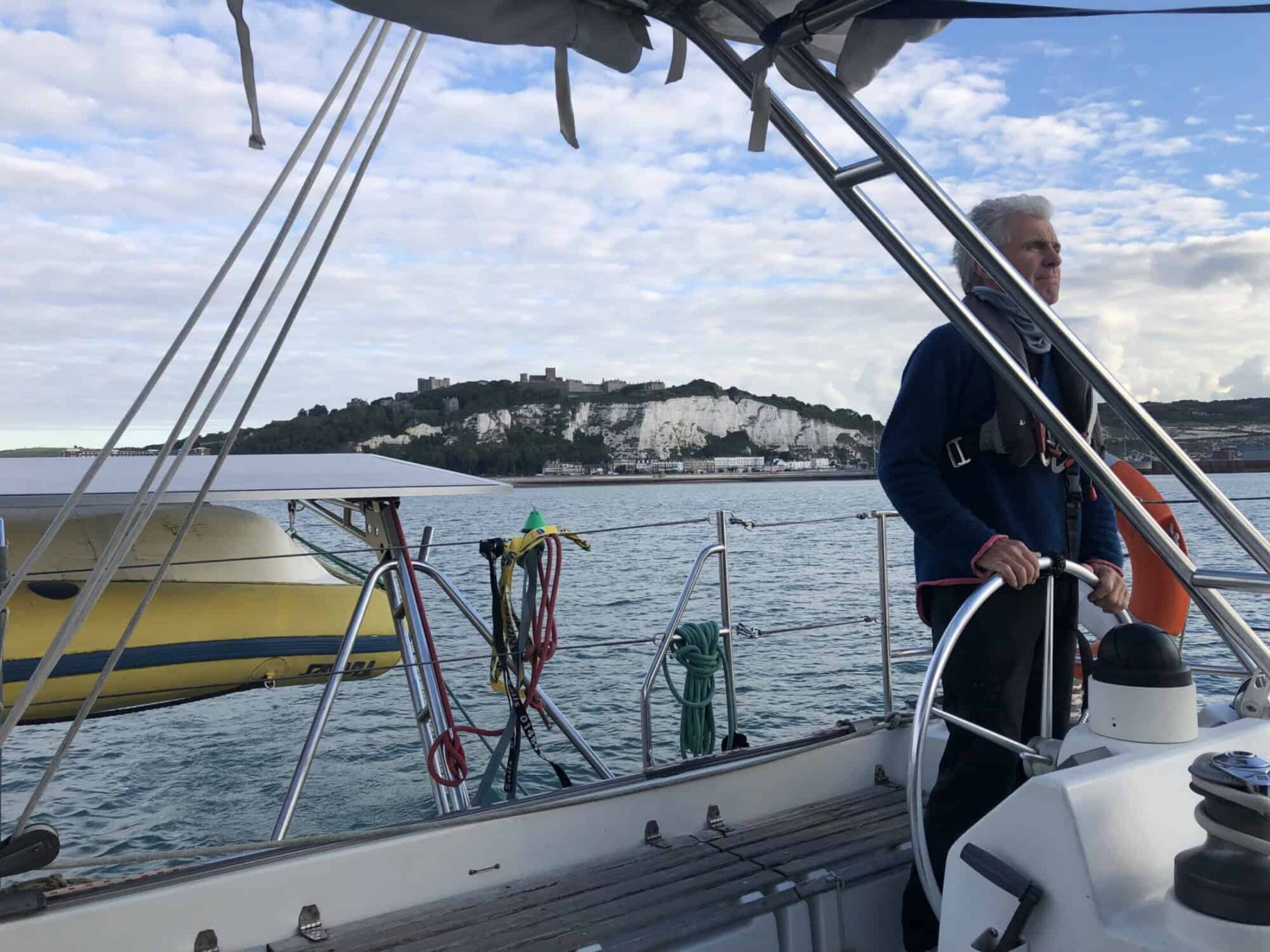
Captain Jim Duerden riding the Mago Merlino on its way to France. Image: Daniel Fahey
François Loeuillette was one of the first passengers to use the service. Local to Boulogne-sur-Mer, he was using SailLink to cross the Channel, heading to London for the night before travelling back home via the car ferry.
“I like to travel between France and Britain and I wanted to try this new mode of travel as it’s positive and green,” he says. And did he enjoy the crossing? “Yes, very much.”
Although the exact details are still to be announced, the Dover to Boulogne-sur-Mer route will likely run from Easter to October. A second route between Ramsgate and Dunkirk is on the cards for 2024, with a more challenging Newhaven to Dieppe crossing due to start in 2025.
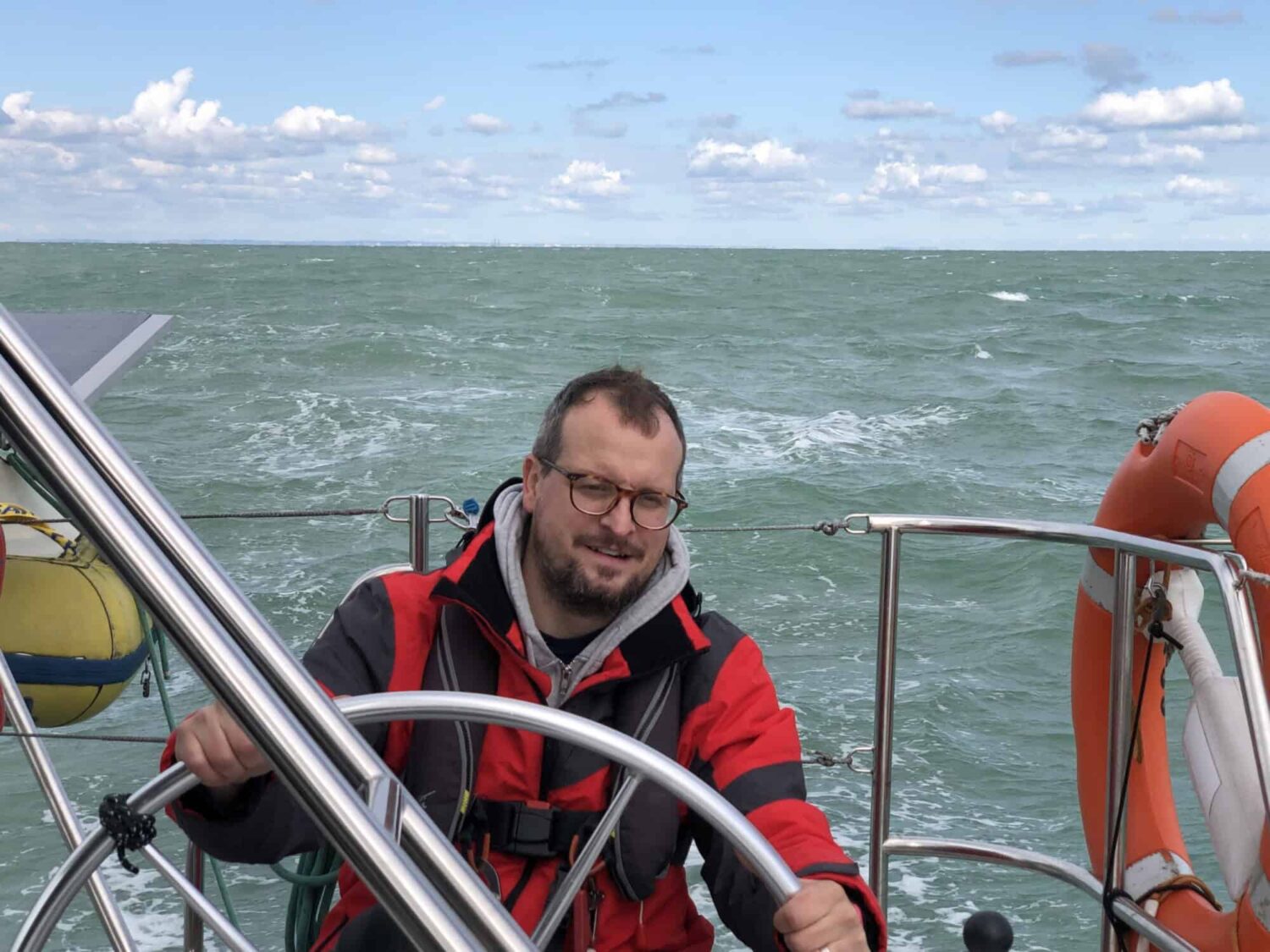
Passengers are encouraged to help out should they wish — so we joined in. Image: Daniel Fahey
A new high-performance catamaran will be used for the daily ferry service, designed specifically to cross the Channel as quickly as possible. Able to hold up to 12 passengers at a time, departures will be timed with the tides to maximise speed. Depending on the conditions, crossings should take around three to four-and-a-half hours.
As a boatbuilder and environmental scientist, Simons previously worked with companies like Fairtransport, a Dutch firm that transports organic and traditionally-made goods, such as rum and coffee, by yacht. As their boats don’t have engines, the trips are carbon-free.
SailLink hopes to be carbon-free too, but the Maritime and Coastguard Agency (MCA) currently requires commercial yachts to have a diesel engine. At the moment, the catamaran has one solar-powered electric motor, plus a diesel engine.
I wanted to try this new mode of travel as it’s positive and green
“I’m hoping – and Andy’s hoping – that his boat will be [100 per cent sustainable], with two electric engines,” says Duerden.
“It’s not that we can’t do it, it’s more the commercial aspect of it because you’ve got to be able to get yourself out of trouble with engines… The MCA, who we’re all governed by, won’t allow us to have two electric motors at the moment [but] I think that will change,” he adds.
Sailing is one of the most eco-friendly methods of travel. It emits less than 1g of CO2 per passenger, per km. Comparatively, a short-haul flight emits around 156g and a foot passenger on a ferry emits 19g.
Ticket prices start at £85 per crossing. If sailing conditions are unfavourable, the yacht may need to use its engine. There may also be delays and changes to the schedule depending on the weather, however SailLink will work with local ferry operators to ensure passengers can cross the Channel if they are unable to sail.
“This should become a normal type of public transport between one country and another,” says Simons, “that’s all this is.”
Main image: Nici Wegener / SailLink 2022
Help us continue to break the bad news bias
Positive News is helping more people than ever to get a balanced view of the world – one that supports their wellbeing and empowers them to make a difference towards a better future. And as our audience and impact grows, we’re showing the rest of the media that good news matters.
But the UK’s cost of living crisis is affecting our income, with fewer people able to commit to a magazine subscription – which has traditionally been our main source of funding. Plus, paper and printing costs keep rising.
We don’t want to put a paywall on our website, because we believe everyone should have the chance to benefit from good news. But we won’t be able to continue funding our online reporting without your help.
If you value what we do and can afford to, please consider making a one-off or regular contribution as a Positive News supporter. We need 1,000 readers to contribute just £3 per month to get us through this challenging time.
And remember, as a not-for-profit, we work only in service to you, and all funds go towards our journalism.
